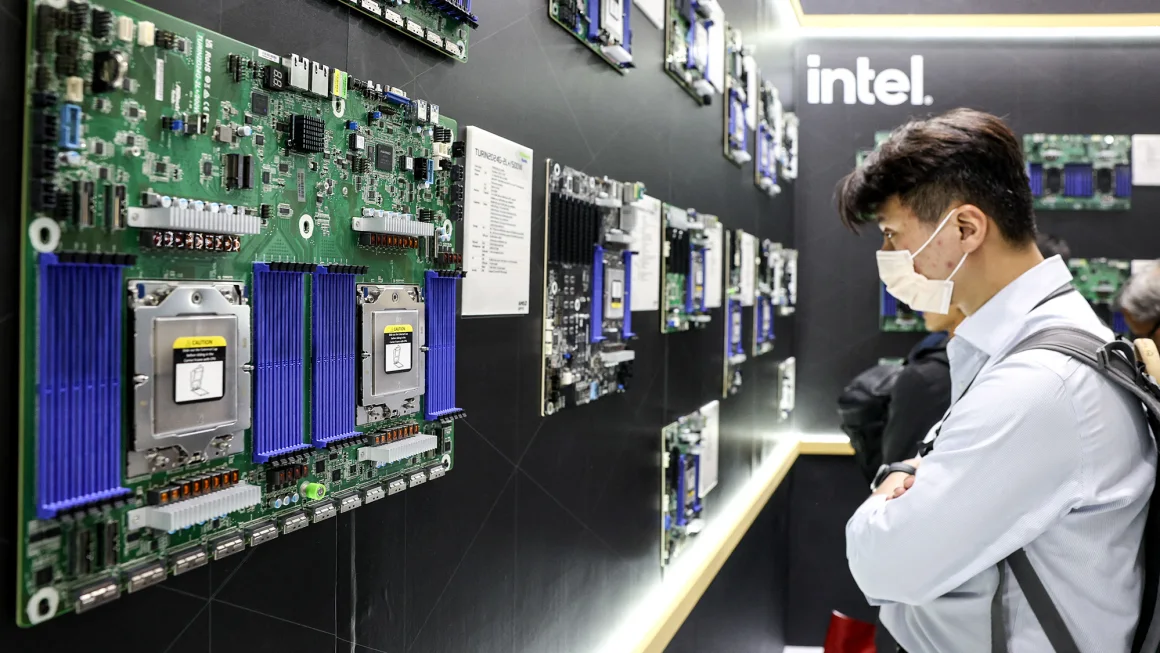The global race for artificial intelligence (AI) supremacy is more intense than ever, with the United States and China emerging as the two primary contenders. At the core of this technological rivalry lies a seemingly small yet profoundly significant component: advanced semiconductor chips. These chips, often referred to as the “brains” behind AI systems, are the foundational technology enabling breakthroughs in machine learning, natural language processing, robotics, and more.
But why is chip technology so pivotal in this race? The answer lies in the unique demands of AI workloads, which require immense computational power, efficiency, and scalability. As both nations pour billions into research, development, and manufacturing, the ability to design and produce cutting-edge chips has become a matter of national security, economic strength, and technological leadership.
In this article, we’ll explore why advanced chip technology is crucial to the AI race between the US and China. We’ll examine the technical, economic, and geopolitical factors at play, compare each country’s strategies, and answer pressing questions about the future of AI and global power dynamics.
The Role of Chip Technology in Artificial Intelligence

What Are AI Chips?
AI chips are specialized semiconductors designed to accelerate artificial intelligence computations. Unlike traditional CPUs, which handle general-purpose tasks, AI chips—such as GPUs (Graphics Processing Units), TPUs (Tensor Processing Units), and custom ASICs (Application-Specific Integrated Circuits)—are optimized for the parallel processing and matrix operations required by machine learning algorithms.
Key Functions of AI Chips:
- High-Speed Data Processing: Handle massive datasets for training and inference.
- Energy Efficiency: Perform complex calculations with minimal power consumption.
- Scalability: Support large-scale AI models and distributed computing environments.
Why Are Chips Central to the AI Race?
AI breakthroughs depend on the ability to process and analyze vast amounts of data quickly and efficiently. The more advanced the chip, the faster and more cost-effectively an AI system can learn, adapt, and perform. This makes chip technology the backbone of innovation in fields like autonomous vehicles, facial recognition, natural language processing, and smart manufacturing.
In short: The nation that leads in AI chip technology will likely set the pace for global AI innovation.
The US vs. China: Competing Strategies in AI Chip Development
The US Approach
The United States has long been a leader in semiconductor design and manufacturing. Companies like NVIDIA, Intel, AMD, and Qualcomm are at the forefront of developing cutting-edge AI chips. The US ecosystem benefits from:
- World-Class Research Institutions: MIT, Stanford, and others drive innovation.
- Robust Venture Capital: Funding for AI startups and chip designers.
- Global Supply Chains: Access to leading-edge fabrication plants (fabs), often located in Taiwan (TSMC) and South Korea (Samsung).
Key Strengths:
- Dominance in chip design (NVIDIA, AMD).
- Access to advanced manufacturing technologies.
- Strong intellectual property protections.
Key Challenges:
- Outsourced manufacturing (reliance on TSMC and Samsung).
- Supply chain vulnerabilities (e.g., geopolitical tensions with China).
The China Approach
China has made semiconductor self-sufficiency a national priority. The government’s “Made in China 2025” initiative and massive state funding aim to reduce dependence on foreign technology. Key players include Huawei’s HiSilicon, SMIC (Semiconductor Manufacturing International Corporation), and Alibaba’s Pingtouge.
Key Strengths:
- State-backed investment and subsidies.
- Rapidly growing domestic market.
- Integration of AI chips into surveillance, finance, and manufacturing.
Key Challenges:
- Lagging behind in cutting-edge fabrication (e.g., 5nm, 3nm process nodes).
- US export restrictions on advanced chipmaking equipment.
- Talent and IP gaps compared to US firms.
Comparison Table: US vs. China in AI Chip Technology
| Aspect | United States | China |
|---|---|---|
| Chip Design | World leaders (NVIDIA, AMD, Intel) | Rapidly improving (Huawei, Alibaba) |
| Manufacturing | Relies on TSMC, Samsung (offshore) | SMIC (domestic, but less advanced) |
| Government Support | R&D funding, CHIPS Act | Massive state subsidies, Made in China 2025 |
| Export Controls | Imposes restrictions on China | Faces restrictions, seeks self-sufficiency |
| Talent Pool | Deep, with top universities | Growing, but still catching up |
| Market Size | Large, but smaller than China | World’s largest consumer market |
| Key Challenge | Supply chain vulnerability | Technology and equipment gap |
The Geopolitical Stakes of AI Chip Supremacy
National Security
AI chips power not only commercial applications but also military and intelligence systems. From autonomous drones to cyber defense, the ability to develop and control advanced chips is now seen as critical to national security. This has led to:
- Export Controls: The US restricts sales of advanced chips and chipmaking equipment to China.
- Investment Screening: Both countries scrutinize foreign investments in semiconductor firms.
- Supply Chain Resilience: Efforts to “reshore” chip manufacturing and reduce reliance on foreign suppliers.
Economic Impact
Semiconductors are a trillion-dollar industry and the backbone of the digital economy. Leadership in AI chip technology can:
- Drive economic growth and job creation.
- Enable dominance in emerging industries (e.g., autonomous vehicles, smart cities).
- Influence global standards and supply chains.
Technological Leadership
The race for AI chip supremacy is also a race for technological leadership. The country that sets the pace in AI hardware will shape the direction of global innovation, standards, and even ethical norms.
Key Technologies: What Makes a Chip “Advanced” for AI?
Process Node Size
The smaller the process node (measured in nanometers), the more transistors can fit on a chip, increasing performance and efficiency. The most advanced chips today are manufactured at 5nm and 3nm nodes.
Architecture Innovations
- GPUs: Originally for graphics, now dominate AI training workloads.
- TPUs: Custom-designed for AI by companies like Google.
- Neuromorphic Chips: Mimic the structure of the human brain for ultra-efficient AI.
Integration and Packaging
Advanced packaging techniques (e.g., chiplets, 3D stacking) allow for greater performance and flexibility.
How Export Controls and Sanctions Shape the Race
US Restrictions on China
The US has imposed strict export controls on advanced chips and chipmaking equipment, aiming to slow China’s progress in AI and supercomputing. These measures include:
- Banning sales of leading-edge GPUs to Chinese firms.
- Restricting access to EUV (extreme ultraviolet) lithography machines needed for advanced manufacturing.
- Limiting collaboration between US and Chinese semiconductor researchers.
China’s Response
China is investing heavily in domestic R&D, talent development, and alternative supply chains. It is also seeking to develop indigenous alternatives to Western chipmaking tools and software.
The Future: What’s at Stake in the AI Chip Race?
AI Hardware as a Strategic Asset
As AI models grow larger and more complex (think GPT-4, DALL-E, and beyond), the demand for high-performance chips will only increase. The nation that can reliably produce and deploy these chips will have a decisive advantage in:
- Scientific research
- National defense
- Economic competitiveness
The Risk of a “Tech Cold War”
The chip race is fueling broader tensions between the US and China, with both sides seeking to secure their technological independence. This could lead to:
- Fragmented global supply chains
- Competing technology standards
- Increased risk of conflict over critical resources
FAQ
Why are chips so important for AI development?
Chips provide the computational power required for training and running AI models. Advanced chips enable faster, more efficient, and more powerful AI applications.
What types of chips are used for AI?
The main types are GPUs, TPUs, FPGAs (Field-Programmable Gate Arrays), and custom ASICs. Each has unique strengths for different AI workloads.
How do US export controls affect China’s AI ambitions?
Export controls limit China’s access to the most advanced chips and manufacturing equipment, slowing its progress in developing cutting-edge AI systems.
Can China catch up to the US in AI chip technology?
China is making rapid progress, but still faces significant challenges in manufacturing, talent, and access to critical equipment. Closing the gap will require sustained investment and innovation.
What is the CHIPS Act?
The CHIPS Act is a US law that provides funding and incentives for domestic semiconductor manufacturing and research, aiming to strengthen US leadership in the field.
Conclusion
The AI race between the United States and China is about much more than algorithms and data—it’s about the chips that make AI possible. Advanced semiconductor technology is the linchpin of national security, economic power, and technological leadership in the 21st century. As both nations invest heavily in chip R&D, manufacturing, and talent, the outcome of this race will shape the future of global innovation and geopolitics.
Key Takeaway:
Whoever masters the art and science of AI chip technology will not only lead in artificial intelligence but also set the rules for the digital age. The battle for chip supremacy is, in essence, a battle for the future itself.
